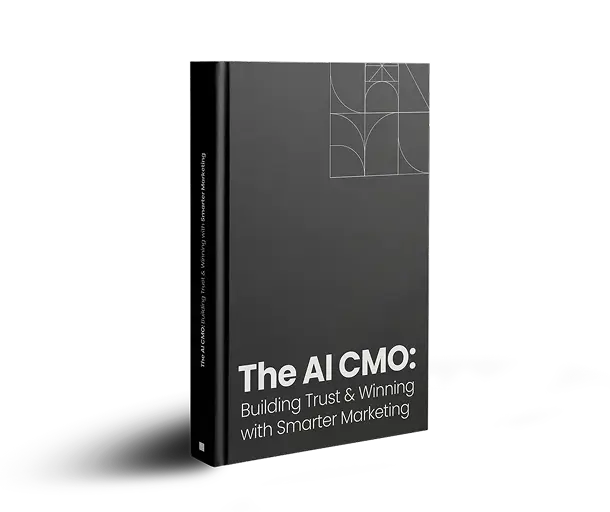
Highlights
- Drip campaigns = time-based, structured, ideal for onboarding and reminders.
- Nurture campaigns = behavior-driven, adaptive, perfect for complex B2B sales cycles.
- Using the wrong approach slows the pipeline and frustrates buyers.
- Smart marketers combine drip campaign best practices with email nurture campaign best practices for maximum impact.
A lot of marketers mix up drips vs nurtures and end up using the wrong tool for the job. The truth is, while both are essential in B2B email marketing best practices, they serve very different purposes in today’s buyer-led journey.
Here’s the difference: Drip campaigns are time-based. Great for onboarding or webinar follow-up. Nurture campaigns are behavior-based. Perfect for complex B2B deals that require multiple touchpoints and personalization.
In this article, I’ll break down drip campaign vs nurture campaign, when to use each, and how they work together to power a modern lead nurturing strategy.
What Are Drips vs. Nurtures?
Before we talk about applications, let’s define them clearly.
Email drip campaigns: Pre-set, time-based email sequences. They go out on fixed schedules regardless of buyer behavior. Example: A 5-part onboarding series where the system sends “Email 3 of 5” no matter how engaged (or unengaged) the lead is.
Email nurture campaigns: Behavior-driven flows that adapt to a prospect’s actions. They deliver lead nurturing emails based on clicks, downloads, site visits, or stage in the buying journey.
Think of it this way: Drip email vs nurture email is like broadcasting vs conversing. One pushes messages on a timer; the other listens and responds.
Drip Campaign Examples
To make it practical, here are common use cases where drip campaign best practices shine:
- Onboarding flows for new users.
- Webinar reminders and post-event follow-ups.
- Trial Education Series (Day 1: Welcome, Day 3: Feature Tips, Day 7: Case Study).
- Holiday or seasonal promotions.
These are great because they don’t need personalization, everyone in the segment receives the same treatment.
Nurture Campaign Examples
By contrast, here are situations where email nurture campaigns make more sense:
- A prospect downloads a whitepaper and then visits your pricing page.
- An executive-level lead opens multiple thought-leadership emails but doesn’t request a demo yet.
- A stalled lead re-engages with a product webinar.
This is where nurture email campaigns adjust dynamically, serving tailored content and progressing leads toward sales readiness.
When to Use Drips vs. Nurtures in a Buyer-Led Journey
The modern buyer-led journey in B2B no longer follows predictable, linear steps. Buyers move at their own pace, switching between channels, researching independently, and engaging only when they see value. Using the wrong type of campaign, whether a drip campaign vs. a nurture campaign, can lead to missed opportunities, wasted touches, and frustrated prospects.
So how do you decide? It comes down to purpose and buyer behavior.
Use drip campaigns when:
- You want consistent, time-based communication that doesn’t depend on individual buyer actions.
- The message is standardized and applies equally to all recipients, for example, onboarding sequences, webinar reminders, or renewal notifications.
- You’re not relying on behavioral triggers but instead want a simple, automated series.
In these cases, email drip campaigns work well because they ensure every lead receives the same structured communication. Applying drip campaign best practices like clear sequencing, concise messaging, and timely delivery can strengthen early-stage engagement.
Use Nurture Campaigns when:
- You need adaptive, contextual engagement that adjusts based on what a prospect does, like clicking an email, visiting a product page, or downloading a case study.
- The buying process is long and complex and involves multiple decision-makers, as is often the case in B2B.
- You’re implementing a deeper lead nurturing strategy, where content, cadence, and messaging evolve with the buyer’s journey.
Here, nurture email campaigns are far more effective because they respond to real-time behaviors. By following email nurture campaign best practices, you can personalize the journey with relevant lead nurturing emails that move prospects closer to conversion.
Drip email vs. nurture email is about using each one at the right moment in the buyer-led journey drip nurture campaigns framework. Drips establish structure, while nurtures provide flexibility and relevance. Together, they create a more aligned and effective lead nurturing email marketing strategy.
Why the Difference Matters
The distinction between drips and nurtures may sound like a small detail, but in reality, it can make or break your funnel efficiency. Prospects are in control of when, how, and why they engage with your brand. If you rely only on rigid email drip campaigns, you risk losing high-intent leads simply because your messaging doesn’t keep pace with their actions.
For example, imagine a sales-ready prospect who has already visited your pricing page, downloaded a case study, and opened multiple emails from you. If they are still stuck in a drip campaign waiting for “Email 4 of 6,” your marketing misses the chance to accelerate the conversation. Instead of pushing a generic message, a well-designed lead nurturing email marketing flow would immediately deliver content tailored to that engagement, like a product comparison guide, a demo invite, or even a sales outreach trigger.
As Rudy Ricci, VP of Sales at Binalyze, puts it:
“Companies should stop relying on drips the moment they have intent data, because static messaging is just email blasting—it won’t match a buyer-led journey. In 2025, every AI-driven sales tool or tactic must either relieve a customer’s pain point or generate revenue, otherwise it’s noise. Think of it this way: if you’re shopping for a family car and a motorcycle company keeps dripping you messages, would you suddenly say, ‘Forget safety and seats, I’ll ride in the snow on two wheels’? Of course not—and tech buyers feel the same about irrelevant solutions that don’t solve the problem.”
This is why understanding drip campaigns vs. nurture campaigns is critical. Drips deliver consistency, but nurtures provide adaptability.
In B2B cycles, that adaptability is often the difference between keeping a lead engaged and losing it to a competitor.
The stakes are high because they are central to B2B email marketing best practices. Smart marketers know that nurture campaigns create deeper engagement, build trust across multiple touchpoints, and ultimately move prospects through the funnel faster than static drips ever could.
How to Decide Between a Drip Campaign vs. a Nurture Campaign
Choosing between drips vs nurtures doesn’t have to be complicated. It comes down to the goal you’re trying to achieve.
If the goal is awareness or standardized education: Use a drip campaign. Apply drip campaign best practices such as consistent timing, clear messaging, and structured sequences. Great for onboarding, product education, or event reminders.
If the goal is sales engagement or progressive qualification: Use a nurture campaign. Apply email nurture campaign best practices like behavioral triggers, personalization, and adaptive flows. Ideal for complex buying journeys where leads need multiple touchpoints.
The smartest marketers don’t view drip campaigns vs. nurture campaigns as an either/or choice. The most effective lead nurturing strategy blends both:
- Start with an email drip campaign to deliver baseline education and onboarding.
- Transition into a nurture email campaign as leads show intent signals such as repeat visits, form fills, or demo requests.
This hybrid approach ensures your marketing automation stays aligned with real buyer behavior, keeping drips for scale and nurtures for precision.
FAQs
1. What is an Email Nurture Campaign?
An email nurture campaign is a behavior-driven sequence designed to guide leads through the funnel with relevant content based on their actions.
2. Difference Between Drip and Nurture Campaigns?
A drip campaign vs a nurture campaign differs in triggers: drips are time-based, nurtures are behavior-based.
3. How Do Drip and Nurture Campaigns Fit Into a Buyer-Led Journey?
Drips maintain consistency in the early journey, while nurtures adapt to the buyer’s signals deeper in the funnel.
4. Can Drip Campaigns and Nurture Campaigns Work Together In the Buyer Journey?
Yes. A lead nurture campaign can pick up where a drip sequence leaves off, creating a seamless buyer-led journey drip nurture campaigns experience.
Final Thoughts
When it comes to drips vs nurtures, the real power lies not in choosing one over the other but in knowing when and how to use each. Email drip campaigns excel at delivering fixed, scalable messaging, while nurture email campaigns are essential for adaptive engagement across complex buyer-led journeys.
The best B2B marketers don’t separate the two, they integrate them. By combining drip campaign best practices with email nurture campaign best practices, you can build personalized experiences that keep pace with buyer behavior and move leads through the funnel faster, more efficiently, and with greater impact.
Our blog
Latest blog posts
Tool and strategies modern teams need to help their companies grow.

Explore the differences between direct and programmatic ads, their trade-offs, when t...

Discover six hybrid B2B marketing event formats that drive real pipeline growth, enha...

Struggling to convert your SQLs? Learn the common mistake B2B companies make and opti...





